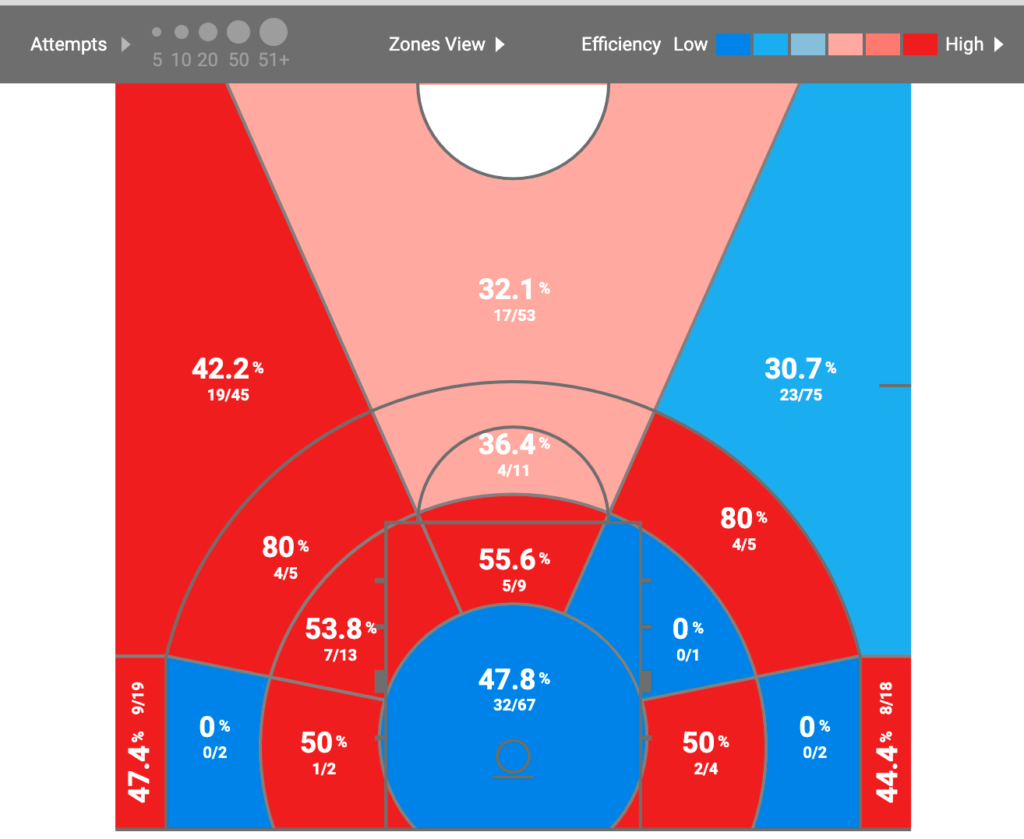A top 35 recruit, Jett Howard lived up to the hype as an All-Big Ten Freshman honoree, as well as an All-Big Ten member. As a freshman, Howard averaged 14.2 PPG, 2.8 RPG, 2 APG, 0.4 SPG, 0.7 BPG, and 1.3 TOPG on splits of 41/37/80. Below is his full scouting report:
Name: Jett Howard
Height/Weight: 6’8/215
Wingspan/ standing reach: N/A
Hand size: N/A
Position: Wing
Pre-Draft team: Michigan
Tools: Size, shooting
Pros:
- Lights out, versatile shooter with a quick release
- Can shoot from anywhere, both off the dribble and spotting up
- Upside as a shot-creator
- Can hit shots off-balance
- Strong upside in running off of screens
Cons:
- Needs to add strength
- Poor defensive impact
- Defensive intensity
- Can get tunnel vision/set on scoring that he walks into turnovers
- Must improve north-south handles/going downhill with his crossovers
- Needs to improve/make his handle more consistent
- Poor halfcourt finisher; can avoid contact too much at the rim
- Mediocre athlete
- Doesn’t get consistent lift on drives
Summary:
As a finisher, Jett Howard adding strength will do him wonders. He is currently contact-averse at the rim against defenders, and lacks great touch over defenders. As he fills out his frame, his mentality when attacking the basket should improve, which would open up his game to better utilize his athleticism off of his shot-making ability. If Howard becomes a better finisher at the rim, his shooting should benefit as well due to what would become unpredictable offense.
The rest of Howard’s scoring ability shines bright, being one of the top shooters in a draft full of great shooters. Howard can quickly spot up over any defender due to size and quick footwork, and he has a strong ability to hit shots off-balance in a non-fluky way. This spot-up shooting shows up in a variety of ways: off of screens (which can often take away the big from the paint and could be something he uses to exploit small lineups) both in mid-range and at the three point line, movement three point shooting, standstill spot-up shooting, and deep range to stretch the defense even more. As Howard develops his ball-handling ability, his self-created scoring should increase to become a complete jump-shooting scorer.
Defensively, there’s lots to be desired from Howard. While he has size, his mediocre athleticism, unreliable effort, and awareness limited him at Michigan in becoming an even average defender. NBA teams will have to accept that his day-one defense will be a negative in their evaluation, and hope that his offense can outweigh the defensive tendencies in his likely limited minutes in year one. What is also worth considering is that Howard played for his dad at Michigan, and had a much longer leash than if he had played for any other coach. How this context impacts the behind the scenes, such as accountability/coachability, is a big swing factor in the pre-draft evaluation for NBA teams.
Overall, Howard has some negative traits he must fix in terms of shot selection, motor, and defense, but could be one of the best shooters from the draft. Early in his career, Howard will likely have to be limited to just a spot-up shooter in under 25 minutes per game, but as he grows his game and potentially improves his habits, he could become a quality starter on a playoff team.
Similar to: taller Buddy Hield, Jordan Nwora
Projected draft range: 12-20
Expected role: Sharpshooter with some self-creation ability
Unplayable if: Defense and motor negate his shooting ability.
Exceeds expectations if: Jump shooting turns elite, motor improves, and self-creation upside is maximized.
Videos:
Shot chart:

